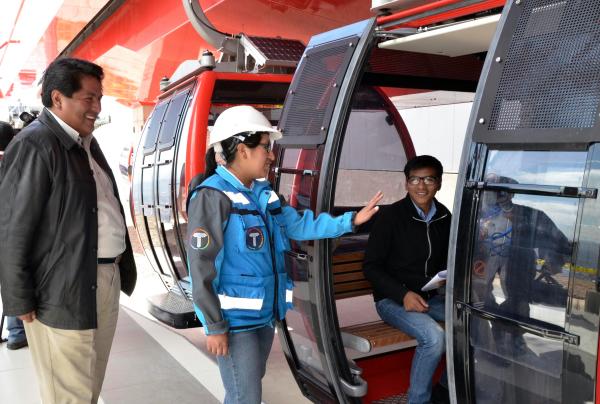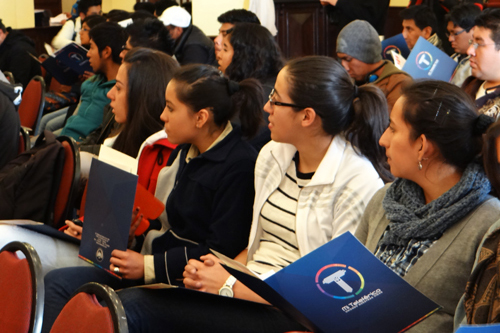Post by Mauricio Miranda.
For years, we have witnessed the rise of cable car technology as a game changer in the realm of urban transportation. And in some cities, certain transit agencies are now aiming to create a more personal connection between the gondola networks they’ve built and the people they serve.
In Medellin and La Paz, in particular, transit culture has never been so highly regarded. If you ask any local about their thoughts towards their transit system, you will immediately sense their pride — it’s as though they considered the transit system to be their very own, similar to the way one might feel about their own soccer team or personal vehicle.
Bolivian cable car provider “Mi Teleferico” (loosely translated as “my gondola” or “my cable car”) is trying to create and promote a sense of ownership by addressing one of the most difficult challenges that the vast majority of young adults face: acquiring your first formal job.
In many developing nations (and sometimes even in developed ones), paid part-time employment in a recognized organization is something that not every university student has access to, and can be easily considered a luxury. Now, in La Paz, university students have the opportunity to work in the transit industry through a program called “Trabajo Con Altura de Mi Teleferico” which translates to “My Cable Car’s High Standard Jobs.”
In order to allow as many as possible to experience this program, the ‘internship’ is only allowed to be taken once by the top students in La Paz’s universities. The purpose of this initiative is to not only instil in students the importance of service-oriented values but it is also to introduce them to the new challenges found in Bolivia’s transportation sector.
Overall, this program has three main strategic objectives in mind:
- To provide the best service possible to citizens and visitors
- To promote the cable car culture and a sense of ownership
- To consolidate the state-owned cable transportation company Mi Teleferico
However, La Paz isn’t the only city to develop of this sort of transit-oriented social program. The Metro Medellin (which manages the Colombian city’s HRT, BRT, LRT and CPT) was the first public transportation company in Latin America to implement the idea of including students aged 18–25 years old in their operations staff.
All the train lines of the Metro Medellin are exclusively driven by more than 250 students that spend half of their time in a post-secondary school, and the rest of the day driving high technology trains (a job that also provides a paycheque to fund their higher-education studies).
The drivers are chosen from a rigorous screening process due to the high importance profile that the job demands — after all, they are responsible for thousands of lives on a daily basis. Medellin’s cable-car system, Metrocable, uses a similar staff structure, as all of their customer-service related activities are carried out by students from across the city.
While it’s impressive to see how Metro Medellin has transformed the lives of students who would otherwise struggle financially to complete their professional endeavours, there’s a further upside to the student employment program: strengthening the connection between the community and the transit service that has transformed Medellin.
Creating a sense of ownership in this industry is not easy. Firstly , you need a system that does the job efficiently. Then— and this is where it gets complicated — you need a service that delivers its users benefits beyond their private agendas.
Transit agencies must strive towards providing programs and services that address and respect the needs of the people it serves. Once you do that, a system can begin to close the gap between the provider and user, and help foster the notion that, for the riders, the system truly is there own.




1 Comment
An interesting article, thank you.